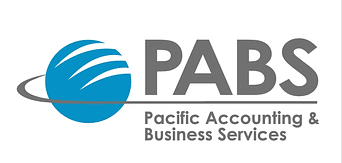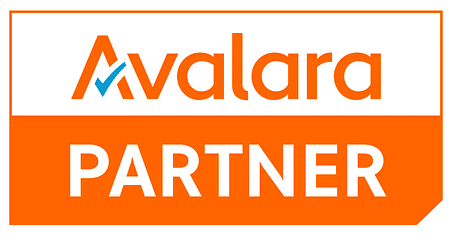Setting Up A Chart Of Accounts For Your Business
What Is A Chart Of Accounts?
A Chart of Accounts (COA) is basically a well-organized list of all the financial accounts a business uses to track its transactions. It helps categorize and record financial activities in a clear and consistent way, making accounting a lot easier to manage. It can be an integral part of an accounting system because it provides a framework for organizing and reporting financial information. Below it’s explained in more detail how the COA works. Understanding the essentials is necessary because it helps you to gain the right knowledge on how COA is built and maintained.
Understanding How A Chart Of Accounts Work
There are several key functions of a COA that small businesses should understand to help their company run more efficiently. The core components are as follows:
- Organization: A chart of accounts is organized by account type and category. This ensures that all financial transactions are properly classified, making it easier to generate reports and analyze data.
- Consistency: COA provides a consistent structure for recording financial information, ensuring accuracy and reliability in your company’s accounting practices.
- Flexibility: The COA can be tailored to meet the specific needs of your business. You can add new accounts or modify existing ones as your business grows and evolves.
- Efficiency: A well-designed COA streamlines the accounting process, saving time and effort when recording and analyzing financial data.
What Are The Different Charts Of Accounts?
Understanding the different types of charts of accounts is crucial because it enables businesses to choose the most suitable structure for their specific financial reporting needs. By identifying the appropriate chart format, companies can ensure that their financial data is accurately categorized, facilitating better analysis and informed decision-making.
Asset Accounts
Assets represent what your company owns in terms of goods, property, or cash. Asset accounts can be further divided into current and fixed assets, depending on how quickly they can be converted into cash. Asset accounts play a crucial role in representing the economic resources available to a company, enabling businesses to evaluate their financial position effectively. These are balance sheet accounts.
Liability Accounts
A liability account means debts could be on the books, whether it’s in the form of loans or credits. These accounts are typically listed first in a Chart of Accounts and reflect all money owed by the business. Common examples of liability accounts include accounts payable, loans payable, and accrued expenses. Accurately tracking these liabilities is essential, as it helps businesses manage their financial obligations and assess their overall financial health. These are balance sheet accounts.
Revenue Accounts
Revenue accounts track the income generated from the sale of goods or services. They are a vital part of a company’s financial statements, highlighting the organization’s performance over a specific period. Common types of revenue accounts include sales revenue, service income, and interest income. Accurately maintaining these accounts is essential, as they not only indicate how well the business is performing but also inform future budgeting and financial strategies. These are income statement accounts.
Expense Accounts
Expense accounts track all costs incurred by the business, such as rent, salaries, utilities, and other operating expenses. These accounts are crucial for budgeting and controlling costs. They also provide valuable information on the profitability of a business and help identify areas for potential cost savings. These are income statement accounts.
Creating A Chart Of Accounts In Five Steps
A chart of accounts can be created in five straightforward steps explained below..
1.Determine How Many Accounts Are Needed
Determining how many accounts are needed is a critical step in creating a chart of accounts because it directly affects the clarity and functionality of your financial reporting. An appropriately sized COA strikes a balance between too many accounts, which can lead to confusion and redundancy, and too few, which may not capture all necessary financial details. By carefully assessing the unique needs of your business, you can identify essential accounts that reflect your operational realities, allowing for accurate tracking of revenues and expenses.
2. Identify The Structure And Needs Of The Business
Business models can vary depending on the goals you wish to accomplish. For example, a sole proprietorship may have a simpler chart of accounts compared to a corporation with multiple departments. Understanding the structure of your business and its specific needs will help determine the appropriate chart format. You should also consider any regulations or requirements that may impact your chart of accounts, such as tax laws or industry standards.
3. Establish Categories And Subcategories
The main categories of your business should align closely with the financial elements. These include assets, liabilities, equity, revenue, and expenses. From there, you can create subcategories that provide more specific details to help better understand your company’s financial health. Examples of subcategories for assets could include cash, accounts receivable, inventory, and fixed assets. More detailed financial reporting can be achieved by creating additional subcategories as needed.
4. Assign Account Numbers
Assigning account numbers is an important process in creating a chart of accounts, as it adds a layer of organization and facilitates easy identification of accounts. Each account should have a unique number that reflects its position in the overall structure of the COA. Typically, numbers are organized in a logical sequence based on the account type For example, assets may start with “100,” liabilities with “200,” revenue with “400,” and expenses with “500,600 or 700” accounts depending on if they are Cost of goods expenses, operating expenses or non-cash expenses like depreciation. This numbering system not only aids in the efficient retrieval of information but also enhances the user experience when navigating through financial records.
5. Review and Adjust Regularly
Once the chart of accounts is created, it’s essential to establish a routine review process. A growing business may undergo changes in its operations, regulations, or industry trends that necessitate adjustments to the COA. Regularly reviewing the accounts ensures that they remain relevant and effective for financial reporting and analysis. This proactive approach to managing the COA contributes to enhanced financial clarity and supports informed decision-making for sustained growth.
Why A Professional Is Encouraged To Help Set Up A Chart Of Accounts
There are a lot of mistakes that can be made when you’re setting up a COA. For instance, a business may fail to create enough subcategories, leading to inaccuracies in financial reporting. An organization may create too many accounts, making it challenging to navigate through the chart and generate reports accurately. Engaging a professional accounting company can mitigate these risks and ensure that your COA is tailored to the specific needs of your business.
Learn More About Flexkeeper's Administrative And Accounting Support
We provide seamless solutions for the entrepreneur who wants to work on their business and leave the administrative tasks to us. Our professional staff can help you create an efficient chart of accounts, manage payroll, invoicing, financial reports, and more. Contact us today to learn how we can support your business growth.











